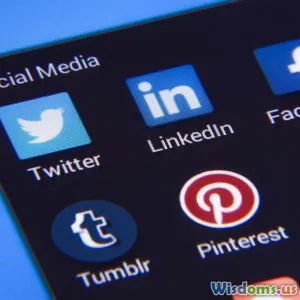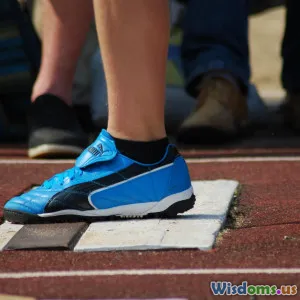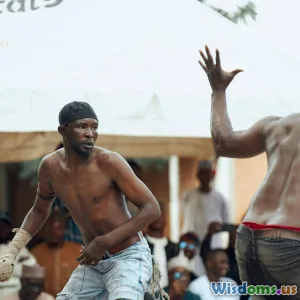
How Social Media Is Redefining Sports Celebrity Culture
10 min read Explore how social media transforms sports celebrity culture, enabling athletes' direct fan interaction, personal branding, and influencing sports marketing strategies. (0 Reviews)
How Social Media Is Redefining Sports Celebrity Culture
Introduction
Once upon a time, sports celebrities were enigmatic figures whose lives were filtered for public consumption by teams, agents, and traditional media outlets. Watching all-star games or reading magazine interviews was often the only way for fans to connect. Today, social media has fundamentally shattered that distance, redefining what it means to be a sports icon.
From Twitter threads to Instagram stories, athletes now wield unprecedented control over their narratives and fan engagement. This shift transcends mere communication, shaking up sponsorships, fan culture, and even how society perceives sports stars' roles. But how exactly has this transformation come about, and what does it mean for the future of sports celebrity culture?
This article provides a comprehensive look into the evolution catalyzed by social media, offering clear examples and expert insights that uncover the intricate interplay between digital platforms and sports fame.
The Evolution of Sports Fame Before Social Media
Traditional Gatekeepers Shaped Athlete Publicity
Before the digital age, athlete fame was carefully curated through centralized channels. Television networks, sports magazines, and official press releases mediated how athletes were portrayed.
For example, Magic Johnson and Michael Jordan’s mystique was partly forged by an era when access was limited and stories were controlled by select journalists. The athletes had little direct input into how they were represented beyond what publicists allowed.
Limited Fan Interaction
Fan interaction was indirect—fans sent letters or attended public events organized by teams. Autograph signings and occasional interviews offered brief windows into athletes’ personalities but reinforced a clear divide.
This structure fostered reverence but inhibited a more nuanced, day-to-day relationship between athletes and their supporters.
The Dawn of Social Media and Its Impact on Sports Celebrities
Direct, Unfiltered Access for Fans
Platforms like Twitter, Instagram, and TikTok enable athletes to bypass traditional media filters and connect directly with millions of fans in real-time.
Take NBA superstar LeBron James, who boasts over 119 million Instagram followers as of 2024. By sharing everything from training routines to social activism, LeBron crafts a multidimensional personality beyond his on-court heroics. This access humanizes stars, forging stronger emotional bonds with fans.
Building Personal Brands
Social media has transformed athletes into entrepreneurs of their own identity. Platforms provide a canvas for athletes to showcase interests, causes, fashion, family life, and humor.
Serena Williams exemplifies this, using Instagram to spotlight her advocacy for racial equity, pregnancy health, and empowerment, building a brand that resonates beyond tennis. This diversification enhances athletes’ marketability far beyond their sport.
New Forms of Content, New Ways to Engage
Videos, live streams, polls, and Q&A sessions invite interactive engagement. Cristiano Ronaldo’s Instagram Stories, which can feature everything from workout snippets to charitable initiatives, invite fans to experience his life inside and outside stadiums.
TikTok, with its viral dance challenges and memes, has birthed a new generation of sports celebrities like gymnast Simone Biles, who uses humor and candidness to connect with Gen Z audiences.
Implications For Sponsorships and Commercialization
Increased Appeal to Global Brands
Athletes with strong social media presence attract direct sponsorship deals and endorsements due to their assured reach and influence. They’re no longer just athletes; they’re digital celebrities and influencers.
According to a 2023 Nielsen Sports study, athletes with over 10 million followers earn 3–5 times more from social media endorsements than from traditional sponsorships.
Companies favor partnerships where athletes create authentic, branded content rather than mere logo placements.
Profiles That Challenge Norms and Embrace Activism
Social platforms empower athletes to amplify social causes, forging brands tied to personal values rather than just performance. Colin Kaepernick’s social media activism propelled him into a global symbol of protest against racial injustice, reshaping sponsors’ priorities.
This alignment with causes helps athletes appeal to socially conscious consumer bases but also introduces risks in polarizing public views.
How Social Media Shapes Fan Culture and Interaction
Fandoms Evolve Into Online Communities
Sports fan clubs have migrated to digital spaces like Reddit, Discord channels, and Facebook groups. Athletes sometimes join these communities personally, enhancing engagement.
When soccer icon Megan Rapinoe joined Twitter discussions about women’s rights and LGBTQ+ advocacy, she galvanized online support far beyond sports circles.
Controversies and Scandals Unleashed
Immediate and uncensored platforms mean athletes can face amplified consequences for misconduct and unpopular opinions. Social media accelerates both praise and criticism, forcing athletes to navigate a complex public relations environment.
Australian cricketer David Warner’s 2020 on-field controversies were dissected live on Twitter and fueled intense debates worldwide, illustrating the double-edged sword effect.
Empowerment of Emerging Athletes
Younger talents strategically utilize platforms to announce signings, milestones, or training progress, sometimes attracting scouts and sponsors before debuting professionally.
High school basketball phenom Bronny James Jr. grew his following exponentially by sharing lifestyle content on Instagram, sparking early recruitment interest.
Case Studies of Social Media’s Influential Role
LeBron James: The Megastar Storyteller
LeBron exemplifies an athlete who mastered social media to transcend sports and transform into a cultural icon. His platforms promote philanthropy, education reform, and voter registration alongside highlights and behind-the-scenes glimpses.
This multi-channel presence boosts his influence while cementing his legacy off the court, illustrating the power of well-managed online identities.
Naomi Osaka: Advocacy Meets Athletic Brilliance
Tennis champion Naomi Osaka’s candid social media presence about mental health awareness sparked critical global conversations, culminating in NASCAR and OECD recognizing mental wellness advocacy.
Her example epitomizes the new era where athletes lead social change, supported by their digital megaphones.
TikTok and Viral Phenomena: Rise of New Stars
Gymnast Simone Biles catapulted into TikTok stardom, inspiring millions with flexibility challenges, candid moments, and motivational content.
This platform has lowered barriers for fame, allowing athletes in less globally prominent sports to gain followers unparalleled in prior era formats.
Challenges and Future Directions
Navigating Privacy and Mental Health
While social media can enhance celebrity culture, the pressure to maintain a public persona can be taxing. Mental health impacts are significant, with some athletes taking breaks due to online harassment and burnout.
Balancing transparency with privacy remains a pressing challenge.
Technological Innovations Continuously Reframe Engagement
Augmented reality (AR) and virtual reality (VR) will usher in new ways for fans to experience live sports via social media. Imagine personalized, immersive interactions with athletes beyond video posts.
Clubs like FC Barcelona are already experimenting with such tech, signaling an evolution in how celebrity culture merges with fan experience.
Conclusion
Social media is more than just a communication tool; it has redefined the essence of sports celebrity culture by democratizing access, controlling narratives, and extending influence far beyond stadiums.
Athletes now embody multifaceted roles—as entertainers, activists, entrepreneurs, and influencers—all facilitated by digital platforms. This shift enriches fan experiences, creates novel commercial opportunities, but also introduces complex challenges related to image management and mental health.
Understanding this transformation encourages stakeholders—from aspiring athletes to marketers—to harness social media conscientiously. In this evolving landscape, those who excel will be the ones who blend authenticity with innovation, crafting lasting legacies that resonate in both sports and society.
The social media revolution in sports celebrity culture is ongoing, dynamic, and full of promise for redefining how we admire and engage with our sporting heroes.
By embracing the new paradigms forged by social media, athletes and fans alike share the excitement of evolving sports celebrity culture – a digital age phenomenon bridging visibility, voice, and values like never before.
Rate the Post
User Reviews
Popular Posts


















